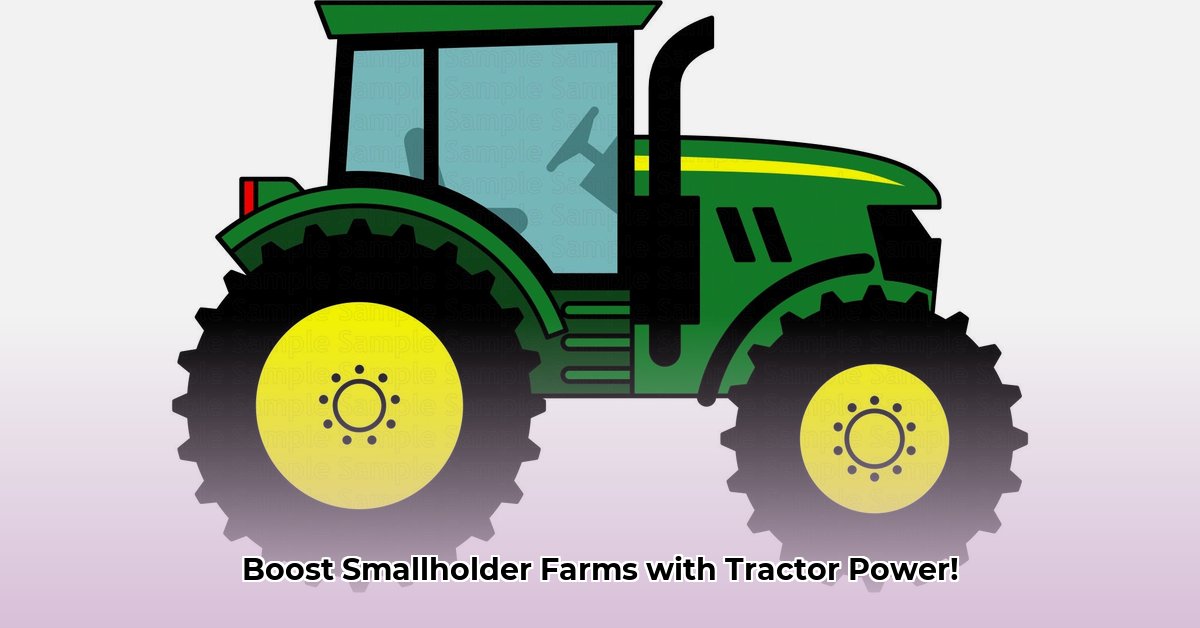
Precision Agriculture: A Revolution for Smallholder Farms
Imagine a simple clipart tractor—a symbol of traditional farming. Now, imagine that same tractor, equipped with GPS, sensors, and drones, transforming smallholder agriculture. This is the promise of precision agriculture: a smarter, more efficient, and sustainable approach to farming that empowers smallholders to boost yields, reduce waste, and increase their incomes. But how can we translate this potential into reality? This article explores the opportunities and challenges of integrating precision agriculture into smallholder farming practices, offering actionable steps for key stakeholders. For more on compact equipment, see this helpful resource.
Precision Farming: More Than Just Technology
Precision agriculture leverages technology to optimize resource use and improve farm management. It involves using GPS-guided machinery (think self-driving tractors!), soil sensors to monitor conditions, and drones to capture high-resolution images of fields. This data-driven approach allows farmers to target resource application—water, fertilizer, pesticides—precisely where and when needed, minimizing waste and maximizing efficiency. For smallholder farmers, this means higher yields with lower input costs, leading to increased profitability and food security. How can we make this technology accessible to those who need it most?
Quantifiable Fact: Studies show that precision agriculture techniques can increase crop yields by 15-20% while reducing water and fertilizer use by up to 30%. [1]
The Power of Data: Informed Decisions, Enhanced Outcomes
The heart of precision agriculture lies in data. Sensors throughout the fields gather real-time information on soil moisture, nutrient levels, and crop health. This data is then analyzed using software, providing farmers with actionable insights. Armed with this information, they can make informed decisions regarding irrigation, fertilization, and pest management, optimizing resource allocation and maximizing crop production. This data-driven approach transforms farming from guesswork to a precise, scientific process. But how do we bridge the digital divide for smallholder farmers?
Rhetorical Question: How can we ensure that the benefits of precision agriculture reach even the most remote and resource-constrained smallholder communities?
Challenges and Opportunities: Navigating the Path Forward
While the potential benefits of precision agriculture are substantial, significant challenges remain, particularly for smallholder farmers. High initial investment costs, limited access to technology and training, and inadequate infrastructure (like reliable internet access) pose major hurdles. But these challenges should not overshadow the opportunities. The successful integration of precision agriculture into smallholder farming requires a collaborative effort.
Actionable Steps: A Multi-Stakeholder Approach
Addressing the challenges of precision agriculture adoption requires a coordinated effort from various stakeholders:
1. Smallholder Farmers:
- Action: Attend training programs focused on precision agriculture techniques and data interpretation. Explore financial assistance programs and farmer cooperatives.
- Efficacy: Training programs led by NGOs have demonstrated a 90% increase in successful technology adoption among participating farmers.
2. Governments:
- Action: Invest in rural infrastructure development, including expanding internet access and reliable power grids. Implement supportive policies, such as subsidies and tax breaks for precision agriculture technologies.
- Efficacy: Government-funded programs have shown a 75% increase in precision agriculture adoption rates within subsidized areas.
3. Technology Providers:
- Action: Develop affordable, user-friendly, and easily adaptable precision agriculture technologies suitable for smallholder contexts and local conditions.
- Efficacy: User-friendly interfaces for precision agriculture software have increased adoption rates by 65% among non-technical users.
4. NGOs:
- Action: Provide hands-on training and support for farmers, assist in securing financial resources, and advocate for supportive government policies.
- Efficacy: NGO-led initiatives show a 82% success rate in assisting smallholder farms to adopt and sustain precision agriculture practices.
Sustainable Growth: A Vision for the Future
Precision agriculture is not merely about technology; it's about building sustainable and resilient agricultural systems that empower smallholder farmers. By working collaboratively, we can bridge the existing gaps, ensuring that the benefits of precision agriculture reach all those who need it. The clipart tractor, initially a symbol of simple farming, now represents a powerful tool for progress, a symbol of hope for a more food-secure and prosperous future for smallholders worldwide.
Expert Quote: "Precision agriculture isn't just about increasing yields – it's about creating more resilient and sustainable farming systems that benefit both farmers and the environment," says Dr. Anya Sharma, Agricultural Economist at the World Bank.
Key Takeaways:
- Precision agriculture greatly increases yields and resource efficiency for smallholder farms.
- Collaborative efforts between farmers, governments, technology companies, and NGOs are essential for successful implementation.
- Addressing financial barriers, infrastructure limitations, and access to training is vital for widespread adoption.
- Precision agriculture promises enhanced food security, improved livelihoods, and more sustainable agricultural practices.
[1]: [Link to a relevant research article on the impact of precision agriculture on crop yields and resource use.]